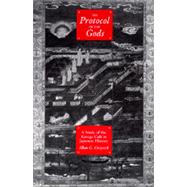
Note: Supplemental materials are not guaranteed with Rental or Used book purchases.
Purchase Benefits
What is included with this book?
| List of Maps, Figures, Diagrams, and Tables | |
| Acknowledgments | |
| A Note on Japanese Names and Terms | |
| Introduction | p. 1 |
| The Study of Japanese Cultic Centers | p. 3 |
| A Morphology of Cultural Systems | p. 11 |
| Organization of the Book | p. 13 |
| The Creation of the Ceremonial Center | p. 15 |
| The Ceremonial Center | p. 19 |
| The Ujidera Phenomenon | p. 20 |
| The Creation of the Kasuga Shrine | p. 25 |
| Enigmatic Identities | p. 29 |
| The Organization of the Shrine | p. 44 |
| The Creation of the Kofukuji | p. 48 |
| Ceremonies and Ritual Assemblies of the Multiplex | p. 57 |
| Ideation - Only at the Kofukuji | p. 64 |
| Constructs of the Mind | p. 68 |
| Kasuga Daimyojin: Protector Or Ruler? | p. 71 |
| The Jinguji Phenomenon | p. 72 |
| Associations between Kami and Buddhas/Bodhisattvas | p. 74 |
| The Kasuga Associations | p. 82 |
| Kasuga Daimyojin | p. 93 |
| From Ceremonial Center to Sacred City | p. 97 |
| The Medieval Organization of the Kasuga Shrine | p. 100 |
| The Medieval Organization of the Kofukuji | p. 106 |
| Economic Considerations | p. 114 |
| Governance and Police | p. 116 |
| Protocol: The Sociocosmic Organon | p. 119 |
| The Procedural Imperative | p. 119 |
| The Territorial Imperative | p. 123 |
| The Sacred Tree: Growth of Ritualized Violence | p. 137 |
| The Price of Time Renewed | p. 141 |
| The Ritual Imperative: Rites of the Sacred City | p. 148 |
| Echoes of Camphorated Maritime Music | p. 151 |
| The Kasuga Grand Rite | p. 155 |
| The On-matsuri: A Provincial Matter | p. 157 |
| Aesthetics and Ethics: Pleasurable Visions | p. 167 |
| Daijo-in Jisha Zojiki: The World of the Monzeki | p. 171 |
| The Experience of Transcendence in Kasuga | p. 186 |
| The Sacred Space of the Shrine | p. 187 |
| Sociocosmic Inscription in Space | p. 197 |
| Orientation of Human Beings in Space | p. 200 |
| Kasuga, a Cosmology Embodied in Nature | p. 202 |
| Buddhist Cosmography and Cosmology | p. 203 |
| Buddha Land | p. 206 |
| The Combinatory Process | p. 208 |
| Pure Land and Sacred Province | p. 216 |
| The Experience of Time in Kasuga | p. 219 |
| Space, Time, Ritual, and Performance | p. 227 |
| Ideation - Only, and a Few Other Things | p. 229 |
| From Cult to Cultural Revolution | p. 237 |
| A Benevolent Ancestor | p. 237 |
| Political Expediences | p. 241 |
| Early Marks of Dissociation | p. 244 |
| 1868: The Year of Cultural Transvestitism | p. 249 |
| Is Kasuga a Model for All Japanese Multiplexes? | p. 256 |
| Notes | p. 259 |
| Bibliography | p. 279 |
| Index | p. 287 |
| Table of Contents provided by Blackwell. All Rights Reserved. |
The New copy of this book will include any supplemental materials advertised. Please check the title of the book to determine if it should include any access cards, study guides, lab manuals, CDs, etc.
The Used, Rental and eBook copies of this book are not guaranteed to include any supplemental materials. Typically, only the book itself is included. This is true even if the title states it includes any access cards, study guides, lab manuals, CDs, etc.